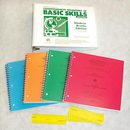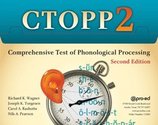- Home
-
Learn
- History of VI >
- Legislation & Laws >
- Vision Professionals >
-
VI Program Resources
>
- Program Printables
- Itinerant Teaching Tips
- Year at a Glance
- VI Program Handbook
- Caseload Analysis
- Organization & Time Management
- Professional Development
- Teacher Standards
- Professional Ethics
- Awards & Recognition
- APH Scholar Program
- Professional Organizations
- Certification Organizations
- Dealing with Challenges
- Professional Publications >
- Relatable Books for All Ages >
- Family Resources >
- Plan
- Basics
-
Teach
- Teaching Strategies >
-
Compensatory Skills Instruction
>
-
Social Skills
>
-
Self Determination
>
- Body Image & Acceptance
- Making Personal Goals
- My Vision Presentation
- My Self-Description
- Create a Personal Data Sheet
- Disclosure Decision
- Disability Statement
- Requesting Help
- Fighting Fears
- My Circle of Support
- Personal Responsibility
- Advocate for Safe Enviroments
- Having Picture Taken
- Coping with Change
- Aging Eyes
- Physical Characteristics
- Political Activism
- Laws Regarding Persons with Disabilities
-
Sensory Efficiency
>
-
Independent Living
>
- Orientation & Mobility Instruction >
- Recreation & Leisure >
-
Career & Vocation
>
-
Grow
- Complete Set Bonus >
-
Recorded Presentations
>
- Webinar: Tips for Being a "Physically Fit" TVI
- Webinar: The Art of Teaching the ECC
- Webinar: Virtual & F2F Strategies
- Webinar: Foundations of Teaching the ECC in the Age of Virtual Instruction
- Webinar: Itinerant Teaching Strategies
- Webinar: Using Themes to Teach the ECC
- Webinar: Conducting a FVLMA
- Webinar: Selecting the Right AT
- Webinar: Developing SMARTER Goals
- Webinar: Determining Service Intensity Using the VISSIT
- Webinar: Activities to Teach the ECC
- Webinar: Accessible Content for BLVI
- Webinar: Accommodations for VI
- Webinar: MIMO Strategies & Activities
- Webinar: SIDPID Strategies & Activities
- Webinar: Standard Course of Study Strategies & Activities
- Webinar: Job Tasks for Job, Career & Life
- Shop
- Jobs
Educational AssessmentsBy: Carmen Willings
teachingvisuallyimpaired.com Updated November 3, 2017 It can be difficult to perform developmental, educational and psychological assessments on students who are blind or visually impaired using the standard tools. This is because the test must be adapted to make it accessible which can sometimes take away the validity of the test. The appropriateness of a test given to a student who is blind or visually impaired is dependent not only on the ability to adapt the test, but on the characteristics of the tests and if the questions are dependent on a students ability to reference or call upon visual information. Simply adapting a written test into a large-print, braille, or audio format or a computer CD-ROM does not in itself make a test accessible. The test must first be in a format that the student uses. For example, if a student who is blind has not yet learned contracted braille, a reading test for the student needs to be in uncontracted braille. A student who has never taken a test using an audio format would be at a disadvantage if the test was provided only in an audio format. If a test is computer generated, as many tests are, a student needs to have some previous experience with the kind of software the test uses. If they use a screen reader or screen magnification software, care needs to be taken to ensure the software is compatible with the testing program. In some tests, complex items may not be convertible to an accessible format. In such a case, a similar question needs to be developed that measures the same skill as the original item. If an item is complex and cannot be adapted, it should be omitted, and the scoring of the test will need to be modified.
In Foundations of Education, Second Edition: Volume II Instructional Strategies for Teaching Children and Youths with Visual Impairments, Co-Author, Toni Heinze identifies the following guidelines that all formal tests should adhere to:
She points out that typically, students with visual impairments are not in the standardized population, and since the tests may need to be significantly modified, it could jeopardize the tests validity. The team must decide the purpose of the test and weigh the advantages and disadvantages to using any tool. Developmental AssessmentsThe majority of assessments are based on the sequence of development for children without disabilities. The developmental sequence of attaining skills for students with visual impairments as well as those with additional disabilities may be different from those of sighted peers.

The Brigance Diagnostic Comprehensive Inventory of Basic Skills, a criterion-referenced inventory that assesses, on an individual basis, a student's strengths or weaknesses in specific skill areas, is available in Large Print and Braille from APH.

Callier-Azusa Scales, Editions G & H is for children ages 0-10. The Callier-Azusa Scale was designed specifically for students with deaf-blindness by an interdisciplinary team who had many years of experience with this population. It is also appropriate for assessing most students with severe handicaps and is especially valuable for students with visual and/or hearing impairments because of sub-scales relating to visual, auditory and tactile development.

The Developmental Assessment for Individuals with severe Disabilities or DASH-3 is a criterion-referenced measure of specific skill levels in persons of all ages who have severe and/or multiple physical/sensory disabilities, including persons with severe and profound intellectual disability (“mental retardation”) and autism spectrum disorders. The scales are also appropriate for individuals with mild to moderate disabilities; those who have single disabling conditions (e.g., individuals with visual impairment or paraplegia), and children who are functioning chronologically from birth to 6 years of age.

The Hawaii Early Learning Profile or HELP is widely recognized as a comprehensive, on-going, family centered curriculum based assessment process for infants and toddlers and their families. By VORT Corporation.

Oregon Project for Visually Impaired and Blind Preschoolers (OR Project) is available through the Southern Oregon Educational Services District. It is a comprehensive assessment and curriculum designed for use with children birth to six who are blind or visually impaired. In the 6th edition, it was significantly updated with the addition of 200 skill areas. Skill areas include: cognitive, language, compensatory, vision, self-help, social, fine motor, and gross motor.
Reynell-Zinkin Developmental Scales is an instrument designed to assess the mental development of young children that are visually impaired. The Reynell-Zinkin Scales were intended as assessment scales for intervention planning and also used as developmental tests and as a means to measure treatment effects.
Intelligence Tests
The Differential Ability Scales II (DAS-II) uses profile analysis to identify the child’s strengths and weaknesses, so the appropriate IEP goals, intervention strategies, and progress monitoring can be developed.

The Wechsler Intelligence Scale or WISC measures two aspects of intelligence in children: verbal and performance intelligence. Verbal intelligence includes aspects like vocabulary and comprehension; performance intelligence includes matrix reasoning and picture completion. The WISC requires between 65 – 80 minutes for administration and generates a score typical of most IQ tests. The average score is 100 with higher scores indicating higher than average intelligence and lower scores indicating lower levels of intelligence.

Woodcock-Johnson III: Tests of Achievement
is available in a full-color large print and braille edition from APH. It is one of the most widely used diagnostic tests for ages 2 and up. It is commonly used to identify learning disabilities and for gathering details on individual strengths and weaknesses in preparation for educational planning. Auditory Processing
The–Comprehensive Test of Phonological Processing (CTOPP) was published in 1999 to meet the need for an assessment of reading-related phonological processing skills. Since its initial publication, the CTOPP has been popular with professionals in psychology and education. It has been used in many studies of reading and phonological processing in both typical and clinical populations.

The Developmental Test of Auditory Perception (DTAP) is a battery of 5 item sets that measure different, but interrelated, aspects of auditory perception. The comprehensive battery is designed to assess auditory perception without invoking higher order verbal reasoning or extensive memory capacity. Items are presented via a CD to standardize presentation of the language item sets and to include various nonlanguage sounds as well. The DTAP uses a simple response format easily understood and accommodated even by children in the primary grades. Using various language-related as well as non-language-related sounds, pairs of stimuli are presented and examinees indicate whether the pairs are the same or different.

The Test of Auditory Perceptual Skills (TAPS) measures what a person does with what is heard, and is intended to be used along with other tests as part of a battery. It is designed to be used by speech-language pathologists, audiologists, school psychologists, and other testing professionals.
|
History of Visual Impairments
Professional Practice
Vision Professionals
Professionalism
Teacher Resources
Professional Publications
VI Book Resources
Family Resources
VI Referrals
Medical vision exams
visual diagnosis
fvlma
|
|
Teaching Students with Visual Impairments LLC
All Rights Reserved |
- Home
-
Learn
- History of VI >
- Legislation & Laws >
- Vision Professionals >
-
VI Program Resources
>
- Program Printables
- Itinerant Teaching Tips
- Year at a Glance
- VI Program Handbook
- Caseload Analysis
- Organization & Time Management
- Professional Development
- Teacher Standards
- Professional Ethics
- Awards & Recognition
- APH Scholar Program
- Professional Organizations
- Certification Organizations
- Dealing with Challenges
- Professional Publications >
- Relatable Books for All Ages >
- Family Resources >
- Plan
- Basics
-
Teach
- Teaching Strategies >
-
Compensatory Skills Instruction
>
-
Social Skills
>
-
Self Determination
>
- Body Image & Acceptance
- Making Personal Goals
- My Vision Presentation
- My Self-Description
- Create a Personal Data Sheet
- Disclosure Decision
- Disability Statement
- Requesting Help
- Fighting Fears
- My Circle of Support
- Personal Responsibility
- Advocate for Safe Enviroments
- Having Picture Taken
- Coping with Change
- Aging Eyes
- Physical Characteristics
- Political Activism
- Laws Regarding Persons with Disabilities
-
Sensory Efficiency
>
-
Independent Living
>
- Orientation & Mobility Instruction >
- Recreation & Leisure >
-
Career & Vocation
>
-
Grow
- Complete Set Bonus >
-
Recorded Presentations
>
- Webinar: Tips for Being a "Physically Fit" TVI
- Webinar: The Art of Teaching the ECC
- Webinar: Virtual & F2F Strategies
- Webinar: Foundations of Teaching the ECC in the Age of Virtual Instruction
- Webinar: Itinerant Teaching Strategies
- Webinar: Using Themes to Teach the ECC
- Webinar: Conducting a FVLMA
- Webinar: Selecting the Right AT
- Webinar: Developing SMARTER Goals
- Webinar: Determining Service Intensity Using the VISSIT
- Webinar: Activities to Teach the ECC
- Webinar: Accessible Content for BLVI
- Webinar: Accommodations for VI
- Webinar: MIMO Strategies & Activities
- Webinar: SIDPID Strategies & Activities
- Webinar: Standard Course of Study Strategies & Activities
- Webinar: Job Tasks for Job, Career & Life
- Shop
- Jobs

